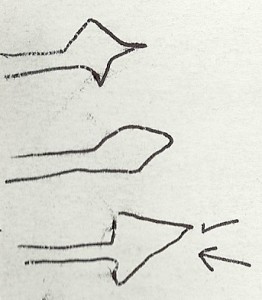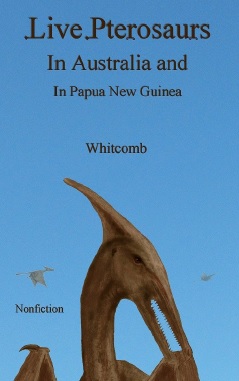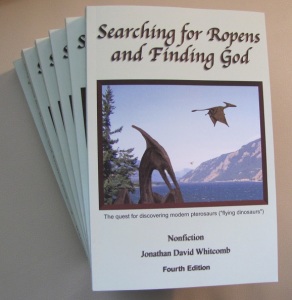Here’s a puzzle that may be interesting to home school children and their parents; in fact it could be fun for many kids, not just those in home school. Would you like to try your hand at solving a mystery? Try to think like Sherlock Holmes as you investigate mysterious reports of pterodactyls flying around California. What an adventure for an amateur sleuth!
Why have some persons in California reported seeing a pterosaur flying overhead? How strange can things get? Western scientists have long thought those flying creatures had all died long ago. And after all, some people do call them “flying dinosaurs.”
This is not a game of make-believe, for these persons (who report the flying creatures) are real, and some of them have given out their full names to the public. The first question is this, although we may refine it or add to it later:
Are these reports of living pterosaurs in California hoaxes?

A lady in Lakewood, California chose this shape for the end of the tail
Introduction
This game will take more than one blog post to explain, but you can start your detective investigation now. Use whatever resources are available, including the internet, as long as you have a parent or guardian who is in charge and who gives permission or supervises. (It’s not very safe for kids to roam around the internet without any supervision. Really!)
In the next one or two posts, I’ll explain who I am and why I invite children to play this game. If a parent would like to contact me, use this link: parent-comment-or-question
This is not like a chess game, with 64 squares and a clear winner or loser. It’s more like a giant chess set with countless squares, and most of the board is out of view at first, obscured by a fog. The game may also have pieces to move around, as you explore, but those pieces are not with clearly defined rules of moving, just general ways of moving.
I’ll give suggestions instead of rules. The clues I give will not always be obvious, and I’ll not always use the word clue when I give one out. Indeed, this is far different from a game of chess, much more like a Sherlock Holmes detective investigation.
First Suggestions
- If kids use the internet for searching, adult supervision is essential
- Beware of strong opinions expressed online regarding reports of modern pterosaurs
- Look for a future “Contents” page on this blog: It will organize the posts (online pages)
- Consider using one or more of the following words for a search-engine (like Google):
- ropen
- modern pterosaur
- living pterodactyl
Regarding suggestion #2 about strong opinions, some skeptics have used unfair tactics in criticizing explorers who have searched in Papua New Guinea for living pterosaurs. It is unethical to accuse explorers of being liars and frauds just because they believe in the possibility that one or more species of pterosaur may still be alive. If you find one of these unfair criticisms, see if you can find a response from one of the persons who was accused of lies or deception. Please look at both sides before making a judgment.
You can now start your investigation, or you can wait for the next post on this blog for more information and suggestions.
###
Chess mistakes by two children in California
The two children competing in the following game (played in 1995 in California) had little experience with chess books. But the father of these two sisters had experience in tournament play.
Free Book on Modern Pterodactyls
You may be able to download a free book about reports of living pterosaurs, commonly called pterodactyls. The pdf book is titled Live Pterosaurs in Australia and in Papua New Guinea.
Attack on “Pterodactyl Expert”
It was just a few commentators on a cryptozoology.com forum thread who initiated the attack. But it was a rather vicious attack, with one of the assailants using the name “ape man.”
Nocturnal Ropen Appears in Daylight in Southern California
On June 19, 2012, over a storm drain in Lakewood, California, in clear daylight at about noon, a long-tailed featherless creature sat on a telephone line . . .
.




